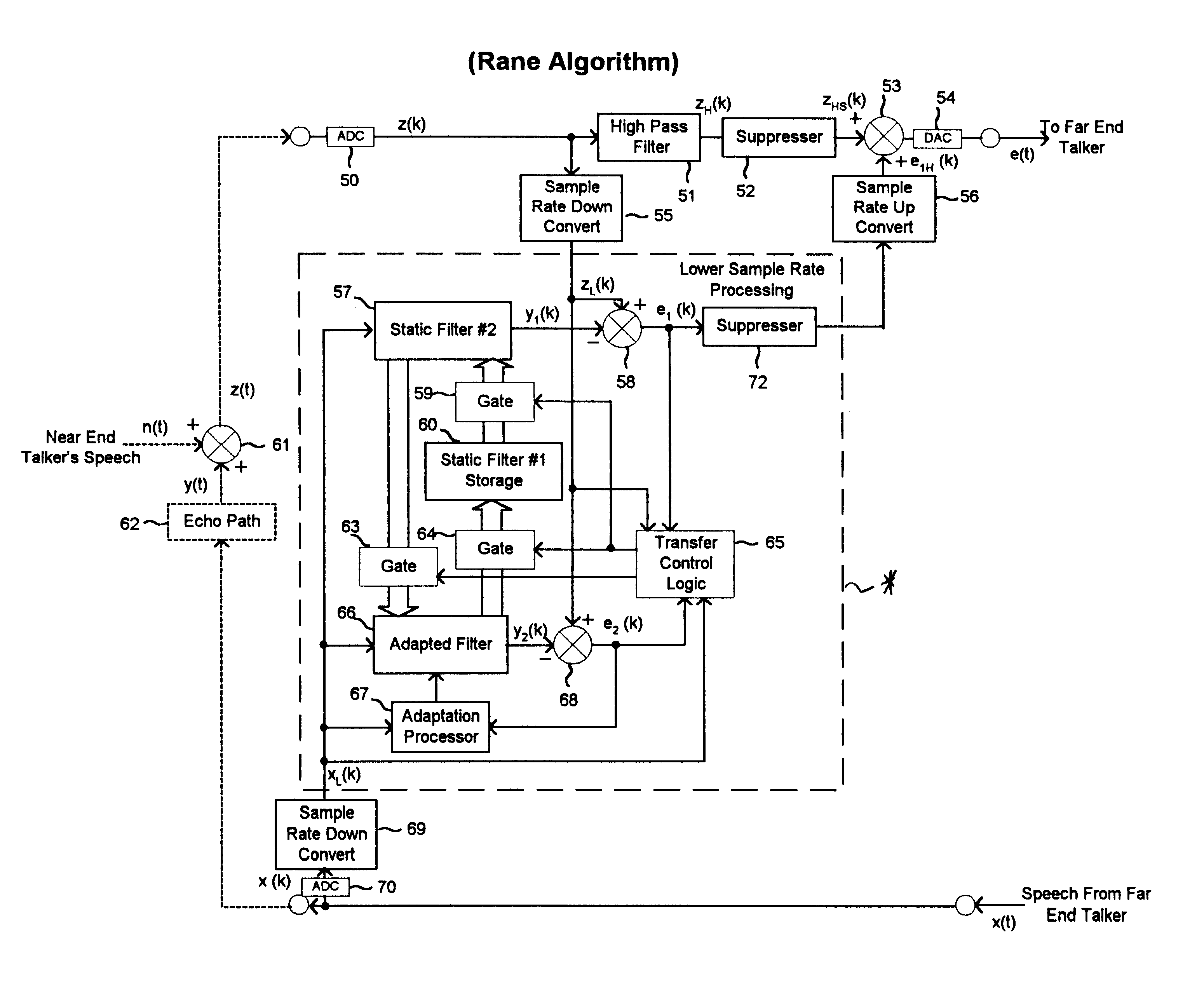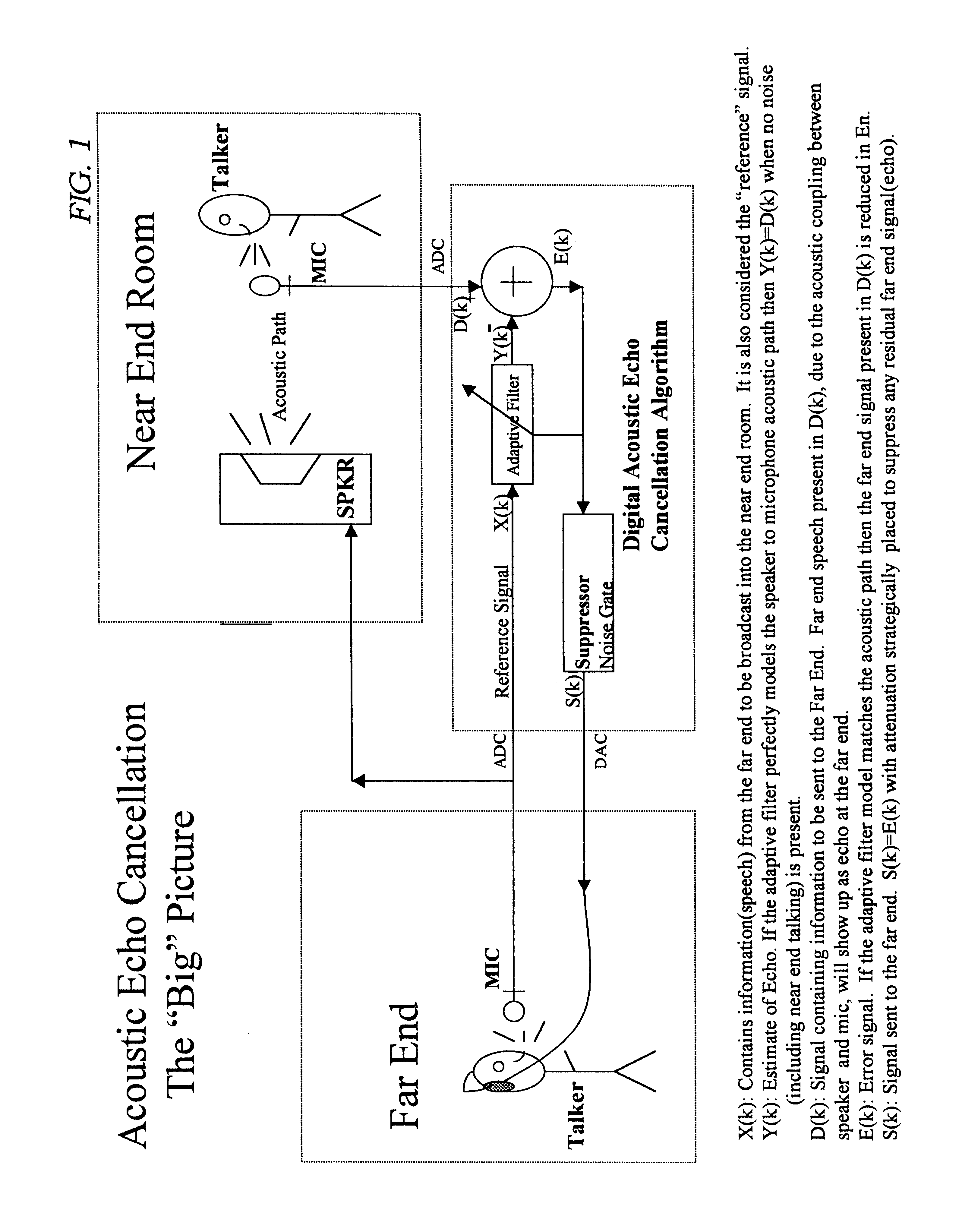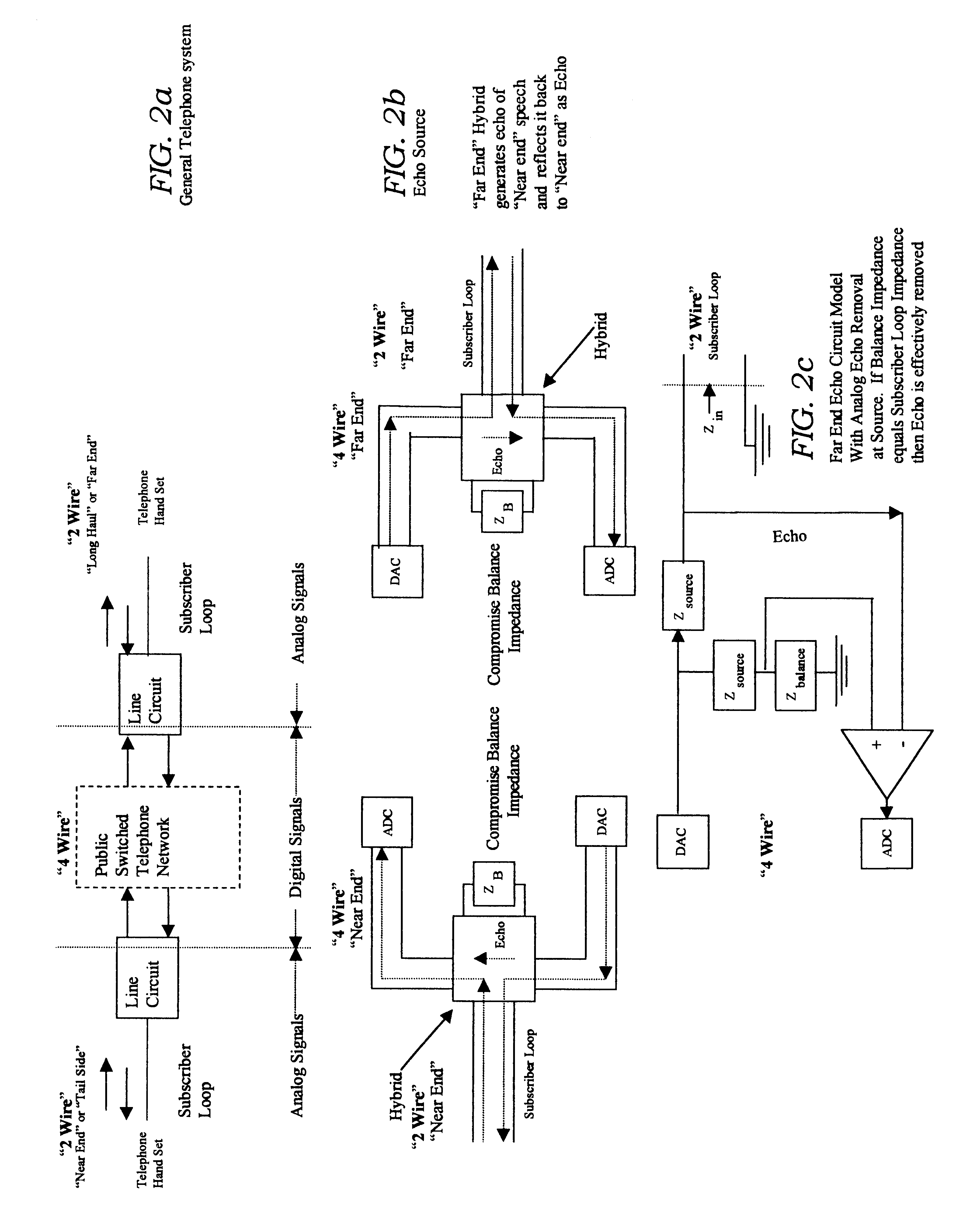Echo cancellation method and apparatus
a cancellation method and echo technology, applied in the field of echo cancellation methods and apparatuses, can solve the problems of delay of echo, weak coupling strength, and almost always unavoidable coupling, and achieve the effect of increasing the bandwidth of the signal and increasing the computational burden
- Summary
- Abstract
- Description
- Claims
- Application Information
AI Technical Summary
Benefits of technology
Problems solved by technology
Method used
Image
Examples
Embodiment Construction
FIG. 6 shows the inventive algorithm based echo canceller. Continuous signals are shown as a function of time (t) in the figure. When a signal is converted to discrete time (becomes a digital signal) through the analog to digital conversion process it is shown as a function of (k). Physically this process is done using off the shelf analog to digital converters (ADC). Once in digital form the actual echo cancellation algorithm is performed on a Digital Signal Processing integrated circuit (another off the shelf device). The final step of the process is to convert the discrete time signal back to a continuous time version of the same using a digital to analog converter (DAC).
Description of Generic Commonly Used Signal Processing Blocks Found in FIGS. 5 and 6.
ADC and DAC (block numbers 1,3,12,50,54,70)
These are commonly performed functions (done with off the shelf hardware) that convert a continuous time signal to a discretely sampled one (ADC) or a discretely sampled signal to a cont...
PUM
 Login to View More
Login to View More Abstract
Description
Claims
Application Information
 Login to View More
Login to View More - R&D
- Intellectual Property
- Life Sciences
- Materials
- Tech Scout
- Unparalleled Data Quality
- Higher Quality Content
- 60% Fewer Hallucinations
Browse by: Latest US Patents, China's latest patents, Technical Efficacy Thesaurus, Application Domain, Technology Topic, Popular Technical Reports.
© 2025 PatSnap. All rights reserved.Legal|Privacy policy|Modern Slavery Act Transparency Statement|Sitemap|About US| Contact US: help@patsnap.com



